
This report focuses on institutions in Myanmar that might potentially be capable of developing components subject to the Missile Technology Control Regime (MTCR) [1] or the Hague Code of Conduct. [2]
Introduction
There have been reports and allegations [3] about Myanmar’s intention to domestically produce ballistic missiles (Figure 1). This report identifies facilities in Myanmar that could potentially be used for the development of ballistic missiles or their components. The research for this report is conducted through reviewing open source literature, ground photos and commercial satellite images available to ONN (primarily from Google Earth, Planet Labs and Maxar Technologies).
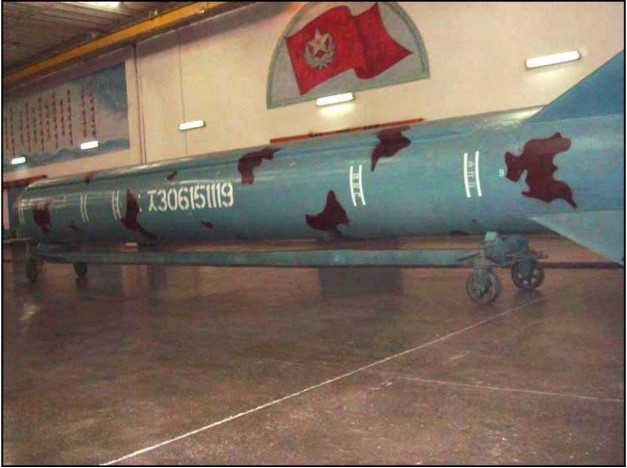
Figure 1. A Hwasong-7 mid-range ballistic missile inside a factory in the Democratic People's Republic of Korea (DPRK). This photo was allegedly taken by a Myanmar military delegation that visited the DPRK in 2008. Image: The Irrawaddy [4]
Institutions
Two institutions in Myanmar that could be relevant to the possible development of ballistic missiles have been identified: the Directorate of Defence Industries (DDI) and the Directorate of Defence Services Science and Technology Research Center (DDSSTRC). The DDI is Myanmar’s main weapon manufacturer and is controlled by the military. The DDSSTRC is also an organization within the Myanmar military but is funded by the Ministry of Science and Technology.
Directorate of Defence Industries (DDI)
Capabilities
The DDI is the main organization overseeing the manufacture of weapons in Myanmar. It is part of Myanmar's military. [5] Currently, there is no hard evidence proving that the DDI has been producing or developing ballistic missiles. However, circumstantial evidence suggests that the DDI at least has some potential to produce solid-propellant, unguided rockets or even short range ballistic missiles, should the Myanmar military government decide to pursue such capabilities (see Section A.3.1). According to open source literature, the DDI might also have engaged in the development of liquid-propellant ballistic missiles (see Section A.3.2 and A.3.3).
Overview
The DDI does not disclose the locations of the military factories – commonly referred to as "kapasa factories" [6] – under its supervision. According to a recent interview with a military officer who fled from the Myanmar military, there are currently 38 kapasa factories under the DDI. [7] Open source researchers have identified approximate locations of 23 kapasa factories. [8] However, due to different romanizations used for local names and inaccuracies in accounts given by sources in Myanmar, these locations may not be entirely accurate.
According to the Ministry of Electricity and Energy of Myanmar, at least 10 kapasa factories are located in the Magway Division [9] in central west Myanmar, while at least two kapasa factories are in the Bago Division, [10] which is south of the Magway Division. The locations of the other kapasa factories are not disclosed by the Ministry.
Based on available satellite images, a typical kapasa factory consists of a checkpoint that connects the factory to the main road, factory halls, dormitories for workers, administrative buildings and, in some instances, helipads. Some factories also have underground workshops to hide their activities from overhead surveillance. These kapasa factories, which are designated by number, [11] produce a wide range of products from surface-to-air missiles, heavy artillery, light arms and military vehicles items such as military uniforms and shoes.
Facilities
This section solely focuses on those kapasa factories that may be relevant to ballistic missile development.
Among the suspected factories, Kapasa-22 appears to be able to produce relatively large solid-propellant motors (see Section A.3.1). Kapasa-14 has two structures that might be relevant to the possible development of ballistic missiles. Kapasa-10 has been alleged to be the main site for ballistic missile development (see Section A.3.2). However, only one indication pointing to the development of ballistic missiles at Kapasa-10 was found in available satellite images (see Section A.3.3).
Kapasa-22
The suspected military factory possibly referred to as Kapasa-22 [12] is one of the largest military factories in Myanmar. Two pieces of information point to the likelihood that Kapasa-22 is engaged in the manufacture and assembly of the GYD-1B, a locally produced variant of the Chinese solid-propellant, mid-range KS-1/HQ-12 surface-to-air missile (SAM) (Figure 2). [13]
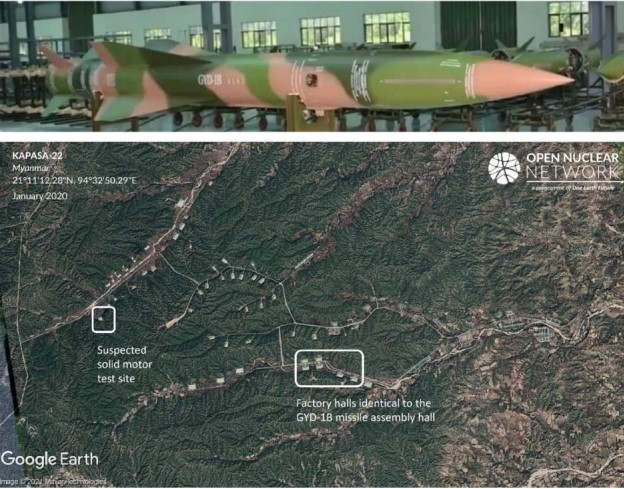
Figure 2. Top: GYD-1B SAM in assembly hall. Bottom: Satellite image of Kapasa-22. Images: Tabinshwehti (top), [14] Google Earth, annotated by ONN (bottom)
The first piece of information are photographs of the GYD-1B missile assembly hall that were posted on line. ONN used one of the photographs (Figure 3) to geolocate the possible location of the assembly hall and found that six factory halls at Kapasa-22 match the structure of the assembly hall in the photographs of the GYD-1B (one of which is featured in Figure 4). However, this is a relatively weak piece of evidence because identical buildings could be found at other suspected sites, such as Kapasa-17 (see Section A.3.4).
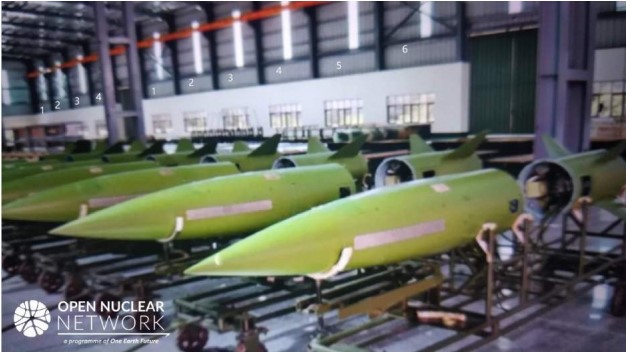
Figure 3. GYD-1B assembly hall has two-story windows: six sets of windows between two doors, and what appear to be four sets of windows flanking each door. Image: Tabinshwehti, [15] annotated by ONN
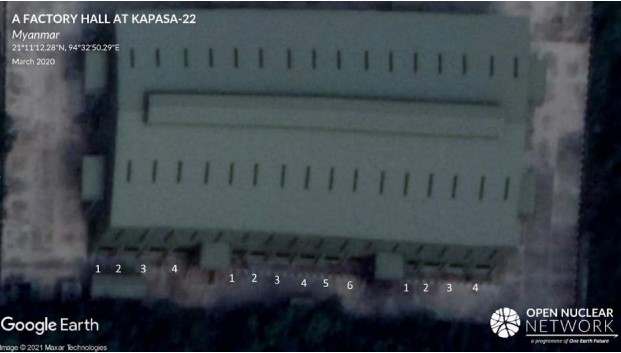
Figure 4: One of the six factory halls at Kapasa-22 that correspond to interior features of the GYD-1B assembly hall. Image: Google Earth, annotated by ONN
The second piece of information is an image of a horizontal motor test site at Kapasa-22 (Figure 5). Satellite images show a burn mark on the ground of this test site that is about 24 metres long. As shown in Figure 6, the bright yellow flame of the GYD-1B has an approximate length of 19 metres. Considering that part of the smoky exhaust from the rocket motor is also hot, the GYD-1B motor should be able to leave a burn mark over 20 metres in length at the test site.
Besides, multiple lightning rods at the test site and adjacent buildings (Figures 5 and 7) point to the possible production or handling of explosive materials, such as propellant.
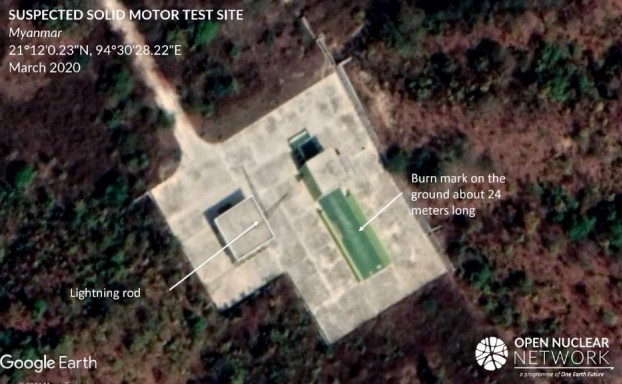
Figure 5. Suspected solid motor test site at Kapasa-22. Image: Google Earth, annotated by ONN
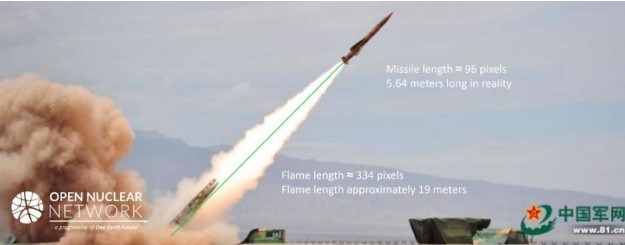
Figure 6. Measurement of flame length of an HQ-12 SAM using a photo taken at a favourable angle measurement. [16] Image: 81.cn, annotated by ONN
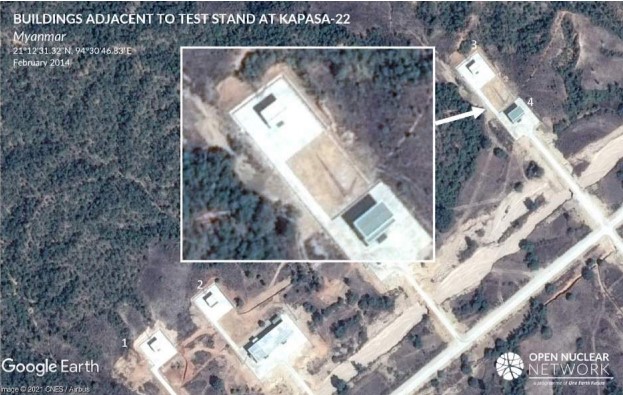
Figure 7. The shadow cast on the ground is indicative of the height of the lightning rods (marked in numbers). Image: Google Earth
In addition, a cable attributed to the US Embassy in Myanmar dated 27 August 2004, released by WikiLeaks, refers to a missile assembly and underground facility 315 miles north north west of Rangoon, which is an exact match for the location of Kapasa-22. [17]
In light of the above considerations, it is reasonable to assume that Kapasa-22 is the production site of the GYD-1B SAM. The GYD-1B has a diameter of 400 mm. [18] A solid-propellant motor of this size could facilitate the development of large-caliber rockets and contribute to the development of short-range solid-propellant ballistic missiles.
Kapasa-22 has a slim structure that is approximately 220 metres long. A similar structure that is approximately 300 metres long is located at the suspected military factory referred to as Kapasa-15 [19] (Figure 8).
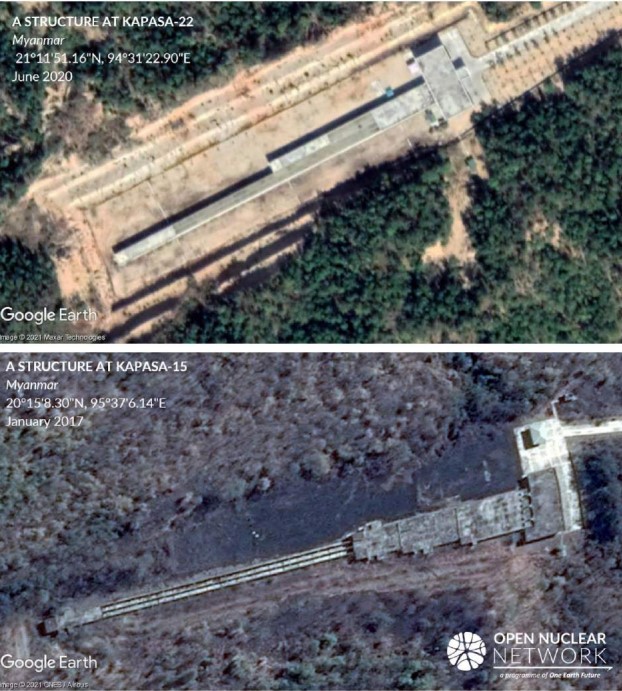
Figure 8. Two similar structures at Kapasa-22 and Kapasa-15. Images: Google Earth
The purpose of these two structures is not immediately clear. They could be test ranges for light arms as their appearance is similar to that of test ranges for light arms in other countries (see, for example, Figure 9).
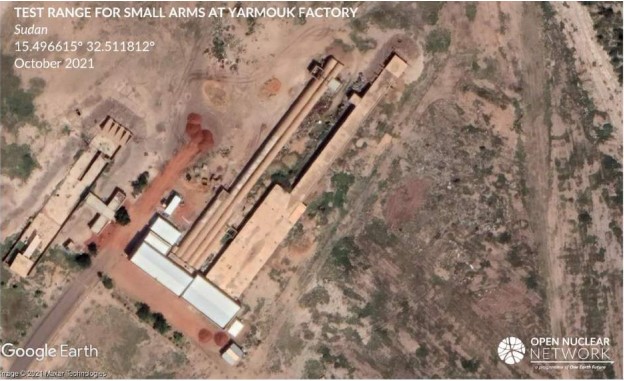
Figure 9. A test range for small arms at Yarmouk Factory, Sudan's main small arms and ammunition factory. [20] Image: Google Earth
Kapasa-14
The suspected military factory referred to as Kapasa-14 (Figure 10) was reportedly involved in the production of multiple rocket launcher systems, with technical assistance from the DPRK. [21]
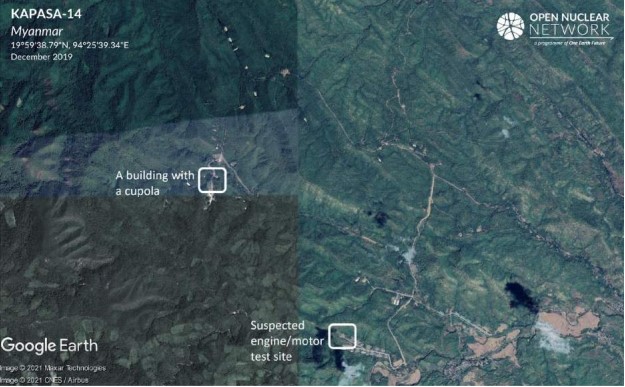
Figure 10. Satellite image of Kapasa-14. Image: Google Earth
According to the above-referenced 2004 cable of the US Embassy in Myanmar, however, this site could also be a factory for the production of SAMs because (1) the construction of Kapasa-14 matches the time when the SAM factory was reportedly being built and (2) the coordinates given in the US Embassy cable are in the vicinity of Kapasa-14 (see following extract from the 2004 cable).
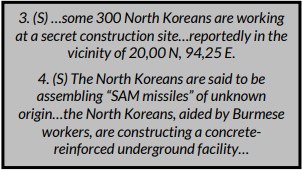
Source: Cable of US Embassy in Myanmar [22]
Kapasa-14 has two structures that might be relevant for the potential development of ballistic missiles. The first structure is a building with a cupola that resembles cupolas used in some other countries to accommodate an erected ballistic missile (Figure 11). [23]
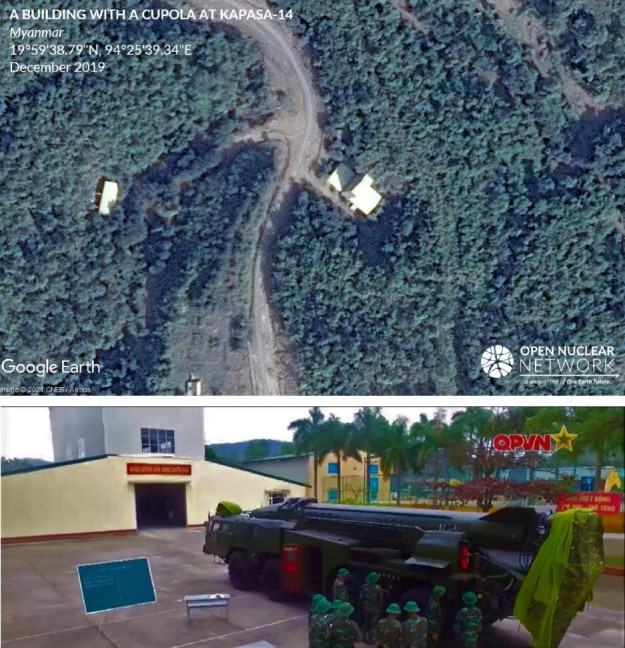
Figure 11. Top: An elevated cupola at Kapasa-14. Bottom: A SCUD missile transporter erector launcher facing an elevated cupola in Vietnam. Images: Google Earth, QPVN
The second structure is a building adjacent to a patch of barren land. This building might be a test stand for rocket propulsion systems (as shown in the close-up insert in Figure 12) given that the barren land might be caused by exhaust from rocket nozzles.
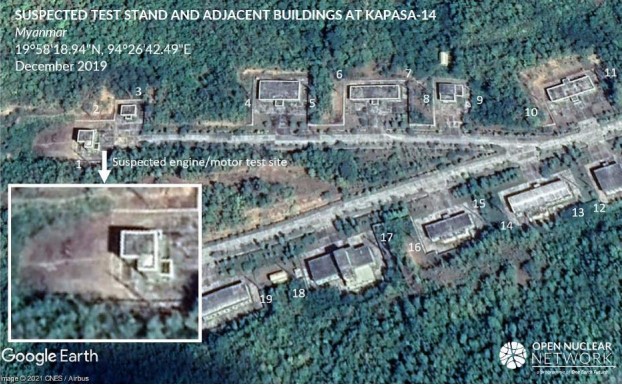
Figure 12. Multiple lightning rods (marked with numbers) are present at a building adjacent to a patch of barren land and nearby buildings. Image: Google Earth
Kapasa-10
The suspected military factory referred to as Kapasa-10 (Figure 13) [24] has allegedly been the principal site for missile research and development [25] including the production of SCUD ballistic missiles. [26]
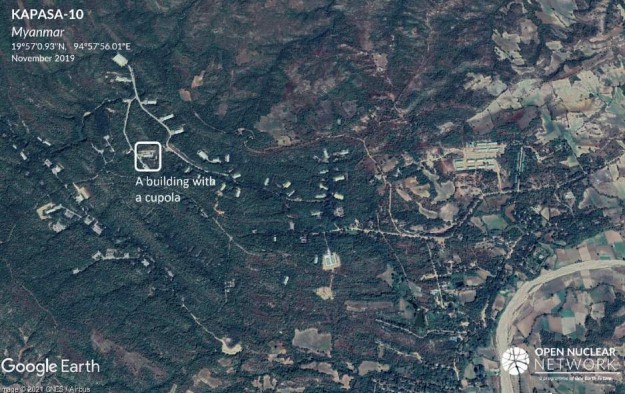
Figure 13. Satellite image of Kapasa-10. Image: Google Earth
At Kapasa-10, there is also a building with an elevated cupola, which, as explained above, might be used to accommodate an erected ballistic missile (Figure 14). This is the only piece of information that could be found linking Kapasa-10 to the possible production of SCUD or other ballistic missiles in available satellite images.
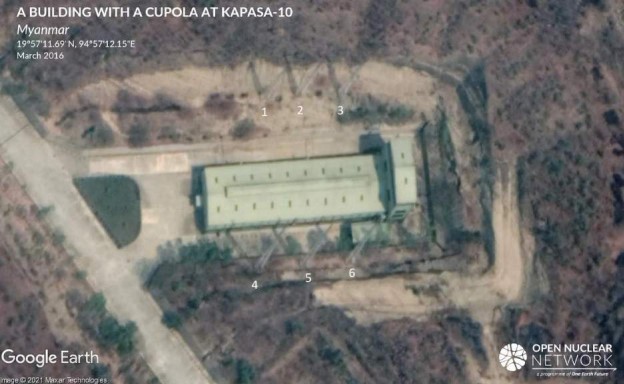
Figure 14. An elevated cupola at Kapasa-10 flanked by six lightning rods (marked in numbers). Image: Google Earth
Others
The research paper by journalist and researcher Bertil Lintner identified several other suspected kapasa factories that might be relevant to the development of ballistic missiles in Myanmar (Table 1). However, the language used to describe them is vague and broad, and no clear indications could be found from available satellite imagery linking those factories to the development of ballistic missiles.
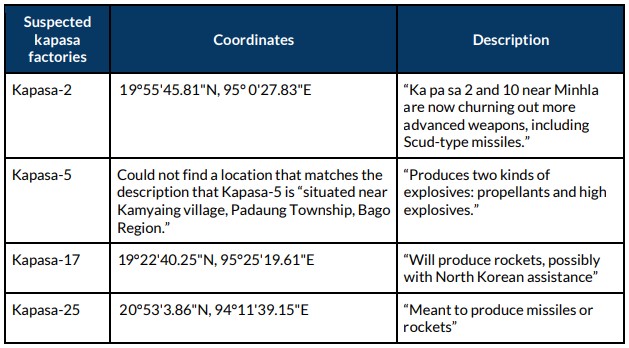
Table 1. Other Kapasa factories that might be of relevance to ballistic missile development. Source: Bertil Lintner [27]
Directorate of Defence Services Science and technology Research center (DDSSTRC)
Capabilities
According to a high-level defector from Myanmar, the DDSSTRC has attempted to produce some parts for liquid-propellant ballistic missiles. Myanmar's current capability is unclear.
Overview
The headquarters of the DDSSTRC are located at the Defence Services Technological Academy in Pyin Oo Lwin. [28] First-hand information regarding the DDSSTRC comes solely from a high-level defector named Sai Thein Win, a former major at the DDSSTRC who defected to Thailand in 2010. [29] According to Sai Thein Win, the Ministry of Science and Technology controlled the funds for the DDSSTRC but the Ministry was "far too academic" and ended up building "nearly useless facilities". Sai Thein Win concluded that the DDSSTRC had no experience in industrial engineering or the production of military hardware, and that only the DDI had this expertise. [30]
Sai Thein Win revealed the locations of two DDSSTRC factories. One factory, the Science and Technological Material Production Workshop Number 1, was allegedly developing nuclear technologies for building a nuclear bomb. The other factory, the Technological Material Production Workshop Number 2, was allegedly developing liquid-propellant ballistic missiles. Although Sai Thein Win's educational background and experience in liquid-fuel ballistic missile engineering were not questioned, [31] his allegations about the Technological Material Production Workshop Number 1 and its role in the nuclear programme were reportedly met with skepticism by the US Central Intelligence Agency and Department of Energy as well as other nuclear experts. [32] Accordingly, the following section focuses only on the Technological Material Production Workshop Number 2.
Facilities
Technological Material Production Workshop Number 2
The Technological Material Production Workshop Number 2 (Figure 15) has allegedly been engaged in the development of prototype parts for liquid-propellant missiles. However, according to Sai Thein Win, the factory lacked sufficient machine tools and experience in producing these components.
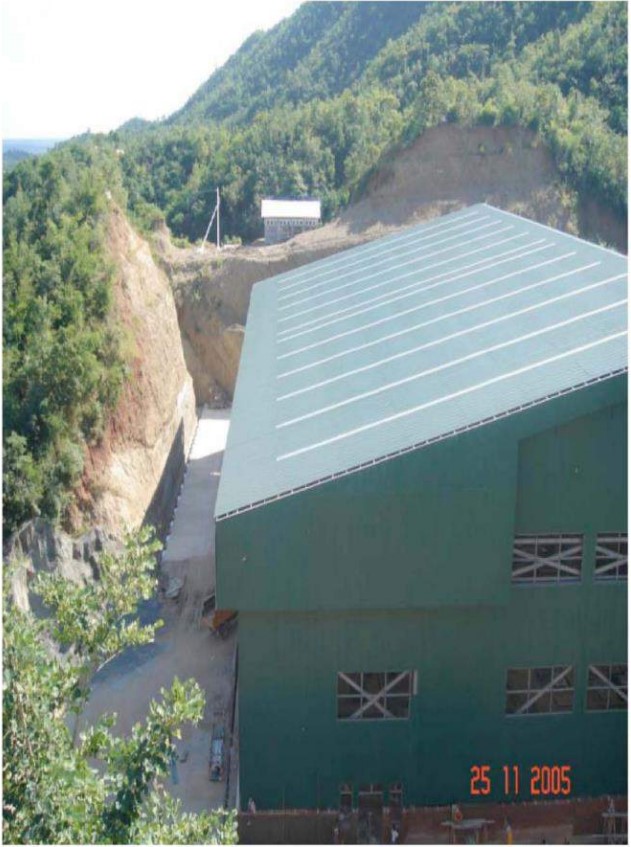
Figure 15. Ground photo of the Technological Material Production Workshop Number 2 taken by Sai Thein Win. Image: Democratic Voice of Burma [34]
By the time of Sai Thein Win's defection in 2010, only one crude prototype impeller (used to increase the pressure and flow of the liquid propellant that goes into the combustion chamber) for a turbopump had been produced (Figure 16). According to Sai Thein Win, the quality of the impeller was unacceptable for a rocket engine. [33]
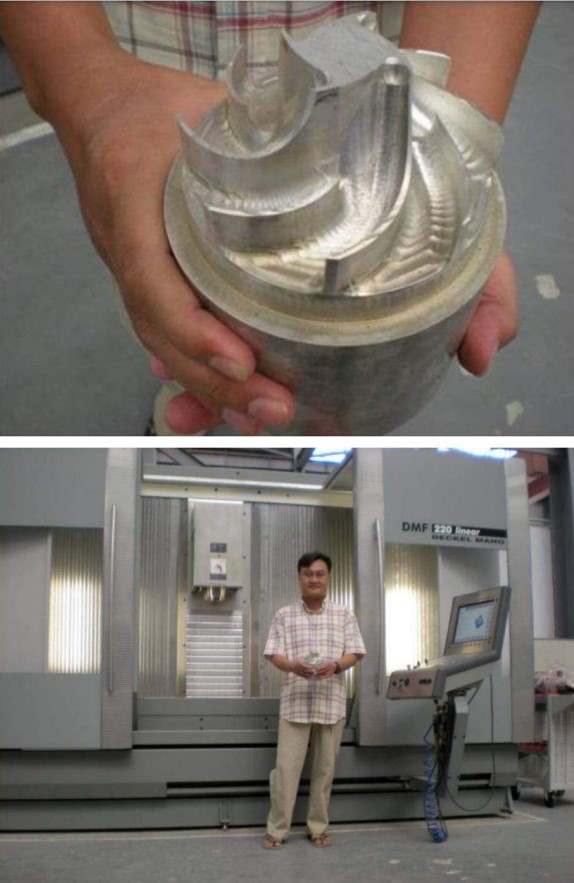
Figure 16. Top: A turbopump impeller made by Sai Thein Win. Bottom: Sai Thein Win holds the impeller in front of a Deckel machine tool. Image: Democratic Voice of Burma [35]
The Technological Material Production Workshop Number 2 appears to be left unattended (Figure 17). It is possible that the alleged ballistic missile programme under the DDSSTRC has been terminated due to the above mentioned shortcomings, or that the equipment inside the factory has been moved to other locations after the defection of Sai Thein Win.
The Technological Material Production Workshop Number 2 appears to be left unattended (Figure 17). It is possible that the alleged ballistic missile programme under the DDSSTRC has been terminated due to the above mentioned shortcomings, or that the equipment inside the factory has been moved to other locations after the defection of Sai Thein Win.
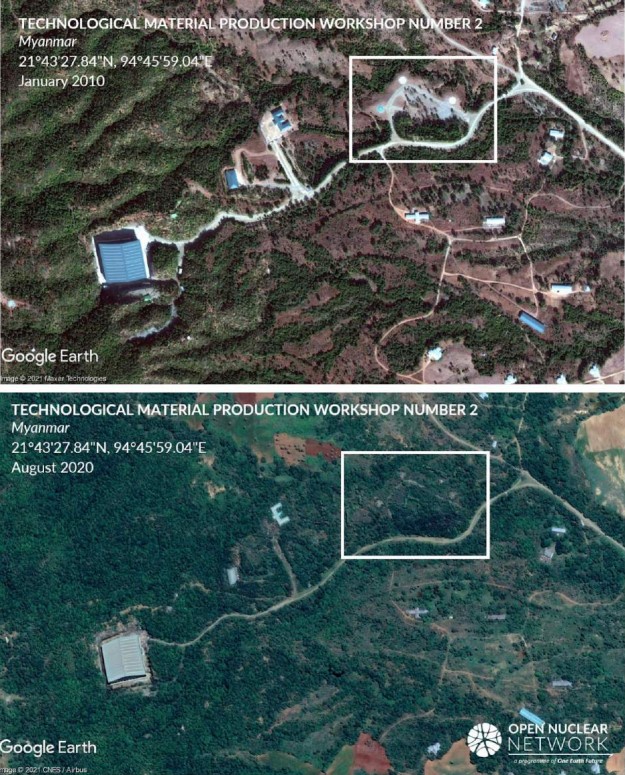
Figure 17. The Technological Material Production Workshop Number 2 appears to be left unattended, as evidenced most clearly by the three helipads (marked in white box) that have been slowly overgrown since 2010. Images: Google Earth
Conclusions
Due to the concealment efforts by the Myanmar military, it has been difficult independently to verify allegations about ballistic missile facilities through the examination of available satellite images and other open source information. Bearing this in mind, ONN has reached the following conclusions based on publicly available information:
-
The attempt by Myanmar to build ballistic missiles appears to be at a nascent stage as there is no information suggesting that it has successfully developed any such missiles.
-
The DDI would likely be the main entity responsible for ballistic missile development should Myanmar decide to pursue domestic ballistic missile capabilities. Available satellite images and ground photos suggest that the Directorate has acquired some capabilities relevant to the development of solid-propellant land-attack rockets and short-range ballistic missiles. The ability of the Directorate to develop liquid-propellant ballistic missiles is unclear. The DDI factories most likely to be relevant to the development of ballistic missiles include Kapasa-22, Kapasa-14 and Kapasa-10.
-
According to information provided by the high-level defector Sai Thein Win and satellite images, attempts by the DDSSTRC to produce liquid-propellant ballistic missiles seem to have been unsuccessful. However, its current capability to develop ballistic missiles is unclear.
[1] The MTCR seeks to limit the risks of the proliferation of weapons of mass destruction by controlling exports of goods and technologies that could make a contribution to delivery systems (other than manned aircraft) for such weapons, and to limit the risk of controlled items and their technology falling into the hands of terrorist groups and individuals. The MTCR Guidelines, including the Annex to the Guidelines, form the basis for controlling transfers to any destination beyond the Government's jurisdiction or control of all delivery systems (other than manned aircraft) capable of delivering weapons of mass destruction, and of equipment and technology relevant to missiles whose performance in terms of payload and range exceeds stated parameters. The MTCR Guidelines define the purpose of the MTCR and provide the overall structure and rules to guide the member countries and those adhering unilaterally to the Guidelines. The Equipment, and Technology Annex is designed to assist in implementing export controls on MTCR Annex items.
[2] The Hague Code of Conduct against Ballistic Missile Proliferation (HCOC) is the result of efforts of the international community to internationally regulate ballistic missiles capable of carrying weapons of mass destruction. By subscribing to the HCoC, members voluntarily commit themselves politically to provide pre-launch notifications (PLNs) on ballistic missile and space-launch vehicle launches (SLVs) and test flights. Subscribing States also commit themselves to submit an annual declaration (AD) of their country's policies on ballistic missiles and space-launch vehicles.
[3] For example, see: David E. Sanger, U.S. Said to Turn Back North Korea Missile Shipment, The New York Times, 12 June 2011, available at: https://www.nytimes.com/2011/06/13/world/asia/13missile.html?_r=2&hp; According to a 2018 report by the UN Panel of Experts, an unnamed UN Member State reported that Myanmar had received ballistic missile systems from the DPRK. See: S/2018/171, UN Panel of Experts report, 5 March 2018, available at: https://www.securitycouncilreport.org/atf/cf/%7B65BFCF9B-6D27-4E9C-8CD3-CF6E4FF96FF9%7D/s_2018_171.pdf
[4] The original link for the photos has become invalid. The PDF version of the photo album can still be accessed at the website of North Korean Economy Watch: https://www.nkeconwatch.com/nk-uploads/Myanmar-delegation-originals-2008.pdf; The Myanmar delegation visited a ballistic missile factory in the DPRK and expressed interest in procuring ballistic missiles, see: ြ န်မာ့တပ်မေတာ် မ အဆင့်မြ င့်ကိုယ်စားလှယ်အဖွဲ၏ အစီရင်ခံစာ [Report of the Myanmar Armed Forces High Level Delegation], The Irrawaddy, 10 June 2010, available at: https://web.archive.org/web/20100612141520/http://www.irrawaddy.org/Burma_NKorea_report.pdf
[5] Treasury Designates Burmese Companies and an Individual with Ties to the Directorate of Defense Industries, US Department of Treasury, 17 December 2013, available at: https://www.treasury.gov/press-center/press-releases/pages/jl2247.aspx; The headquarters of the DDI is situated in the Ministry of Defence compound at Shwedagon Pagoda Road, Yangon. See: Unblocking of Specially Designated Nationals and Blocked Persons Resulting From the Termination of the National Emergency and Revocation of Executive Orders Related to Burma, US Department of Treasury, 31 October 2016, available at: https://www.federalregister.gov/documents/2016/10/31/2016-26124/unblocking-of-specially-designated-nationals-and-blocked-persons-resulting-from-the-termination-of
[6] "Kapasa" means defense industry. See: Maung Aung Myoe, Building the Tatmadaw: Myanmar Armed Forces Since 1948, Institute of Southeast Asian Studies, 2009, Singapore, p. 106.
[7] Soe San Aung, Interview: "The Military Coup Was Not Supposed to Happen", Radio Free Asia, 28 April 2021, available at: https://www.rfa.org/english/news/myanmar/military-officer-04282021135407.html
[8] Bertil Lintner, Burma's WMD Programme And Military Cooperation between Burma and the Democratic People's Republic of Korea, Asia Pacific Media Services, 14 March 2012, available at: https://issuu.com/asia_pacific_media_services/docs/burma-dark-post; Fabian Hinz, thread on twitter, 20 December 2020, available at: https://twitter.com/fab_hinz/status/1342250286325313543
[9] Magway Division, Ministry of Electricity and Energy, Myanmar, available at: https://www.moee.gov.mm/en/ignite/page/49; The information regarding Kapasa sites has been removed from this page as of 17 November 2021.
[10] Bago Division, Ministry of Electricity and Energy, Myanmar, available at: https://www.moee.gov.mm/en/ignite/page/50
[11] Bago Division, Ministry of Electricity and Energy, Myanmar, available at: https://www.moee.gov.mm/en/ignite/page/50
[12] On Google maps, the location has been marked as "Ka Pa Sa 22" by a user, presumably a local guide, according to the user profile under the name "Taratsorn Inkaew". See: https://www.google.com/maps/place/21%C2%B012'19.3%22N+94%C2%B033'26.5%22E/@21.2053625,94.5572847,3a,75y,90t/data=!3m8!1e2!3m6!1sAF1QipMxkWVwYYejxZ-Y-d9crl3dtUgMkayMgh6lh807!2e10!3e12!6shttps:%2F%2Flh5.googleusercontent.com%2Fp%2FAF1QipMxkWVwYYejxZ-Y-d9crl3dtUgMkayMgh6lh807%3Dw360-h270-k-no!7i3968!8i2976!4m13!1m7!3m6!1s0x0:0x2226eb026260cffb!2zMjHCsDEyJzE5LjMiTiA5NMKwMzMnMjYuNSJF!3b1!8m2!3d21.2053722!4d94.55735!3m4!1s0x0:0x2226eb026260cffb!8m2!3d21.2053722!4d94.55735; There is no other information on the possible designation of this site.
[13] The GYD-1B is a locally produced variant of the Chinese KS-1, which is the export version of the Chinese HQ-12. See: Export of Chinese medium- and long-range air defence systems and their competition with Russian anti-aircraft systems, topwar.ru, 19 September 2020, available at: https://en.topwar.ru/175012-jeksport-kitajskih-zrk-srednej-i-bolshoj-dalnosti-i-ih-konkurencija-na-mirovom-rynke-vooruzhenij-s-rossijskimi-protivovozdushnymi-sistemami.html
[14] The original photo was flipped for unknown reasons and was uploaded to Wikipedia by a user under the name Tabinshwehti. Metadata of the photo suggests that it was taken on 31 October 2010. Photo available at: https://en.m.wikipedia.org/wiki/File:Myanmar_Missile_Production_Facility.jpg
[15] The original photo was uploaded to Wikipedia by a user under the name Tabinshwehti. Metadata of the photo suggest that it was taken on 31 October 2010. Photo available at: https://en.m.wikipedia.org/wiki/File:Myanmar_Missile_Production_Facility.jpg
[16] According to export promotion materials, KS-1, the export version of HQ-12, is 5.64 metres long. The scanned promotion brochure can be found at: https://www.globalsecurity.org/military/world/china/ks-1-pics.htm; http://trishul-trident.blogspot.com/2014/01/ks-1a-mr-sam-scores-first-export-success.html
[17] Alleged North Korean involvement in missile assembly and underground facility construction in Burma, US Embassy in Myanmar, 27 August 2004, available at: https://www.theguardian.com/world/us-embassy-cables-documents/20129
[18] The scanned promotion brochure could be found at: https://www.globalsecurity.org/military/world/china/ks-1-pics.htm; http://trishul-trident.blogspot.com/2014/01/ks-1a-mr-sam-scores-first-export-success.html
[19] Kapasa-15 is reportedly located near the township of Myothit. See: Bertil Lintner, Burma's WMD Programme And Military Cooperation between Burma and the Democratic People's Republic of Korea, Asia Pacific Media Services, 14 March 2012, available at: https://issuu.com/asia_pacific_media_services/docs/burma-dark-post
[20] Ulf Laessing, Khalid Abdelaziz, Sudan blames Israeli air strike hit for munitions plant blasts, Reuters, 24 October 2012, available at: https://www.reuters.com/article/us-sudan-planes-idUSBRE89N0WU20121024
[21] The site, about 8 km from Ngape, is the best candidate for Kapasa-14, which is reportedly located in Nga-pe, or Ngape township. See: Bertil Lintner, Burma’s WMD Programme And Military Cooperation between Burma and the Democratic People's Republic of Korea, Asia Pacific Media Services, 14 March 2012, available at: https://issuu.com/asia_pacific_media_services/docs/burma-dark-post
[22] Alleged North Korean involvement in missile assembly and underground facility construction in Burma, US embassy in Myanmar, 27 August 2004, available at: https://www.theguardian.com/world/us-embassy-cables-documents/20129
[23] Jeffery Lewis, That Ain't My Truck: Where North Korea Assembled Its Chinese Transporter-Erector-Launchers, 38north, 3 February 2014, available at: https://www.38north.org/2014/02/jlewis020314/; Jacob Bolge, The Unique Buildings of North Korea's Missile Program, AccessDPRK, 20 June 2010, available at: http://mynorthkorea.blogspot.com/2021/06/the-unique-buildings-of-north-koreas.html
[24] The location of the factory in Konegyi (or Kone Gyi/Kongyee), in Upper Minhla, comports with the description of Kapasa-10. See: Dialogue: Far and Away (an open letter to world leaders), Pro-Democracy Officers and other ranks of Burmese Army, 22 October 2009, available at: https://man.fas.org/eprint/burma.pdf
[25] Dialogue: Far and Away (an open letter to world leaders), Pro-Democracy Officers and other ranks of Burmese Army, 22 October 2009, available at: https://man.fas.org/eprint/burma.pdf
[26] Bertil Lintner, Burma's WMD Programme And Military Cooperation between Burma and the Democratic People's Republic of Korea, Asia Pacific Media Services, 14 March 2012, available at: https://issuu.com/asia_pacific_media_services/docs/burma-dark-post
[27] Bertil Lintner, Burma's WMD Programme And Military Cooperation between Burma and the Democratic People's Republic of Korea, Asia Pacific Media Services, 14 March 2012, available at: https://issuu.com/asia_pacific_media_services/docs/burma-dark-post
[28] Robert Kelly, Ali Fowle, Nuclear Related Activities in Burma, Democratic Voice of Burma, 25 May 2010, available at: https://www.washingtonpost.com/wp-srv/world/documents/060410.pdf
[29] Martin Petty, Myanmar seeking to develop nuclear weapon - report, 4 June 2010, available at: https://www.reuters.com/article/myanmar-nuclear-idUKSGE65308B20100604
[30] Sai Thein Win, Understanding the Military Programmes of Burma, Democratic Voice of Burma, 18 October 2011, available at: https://english.dvb.no/understanding-the-military-programmes-of-burma/
[31] Sai Thein Win studied the design of liquid-propellant engines at the Defence Services Technological Academy (also the headquarters of DDSSTRC) in Myanmar and the Bauman Moscow State Technical University: Sai Thein Win, Understanding the Military Programmes of Burma, Democratic Voice of Burma, 18 October 2011, available at: https://english.dvb.no/understanding-the-military-programmes-of-burma/
[32] Experts, Intelligence Agencies Question a Defector's Claims About Burma's Nuclear Ambitions, Stephen Engelberg, ProPublica, 12 November 2010, available at: https://www.propublica.org/article/experts-intel-agencies-question-a-defectors-claims-about-burmas-nuclear; Another Response to Our Burma Nuclear Story—and Another Answer from Us, ProPublica, 29 November 2010, available at: https://www.propublica.org/article/another-response-to-our-burma-nuclear-storyand-another-answer-from-us
[33] Sai Thein Win, Understanding the Military Programmes of Burma, Democratic Voice of Burma, 18 October 2011, available at: https://english.dvb.no/understanding-the-military-programmes-of-burma/
[34] Robert Kelly, Ali Fowle, Nuclear Related Activities in Burma, Democratic Voice of Burma, 25 May 2010, available at: https://www.washingtonpost.com/wp-srv/world/documents/060410.pdf
[35] Robert Kelly, Ali Fowle, Nuclear Related Activities in Burma, Democratic Voice of Burma, 25 May 2010, available at: https://www.washingtonpost.com/wp-srv/world/documents/060410.pdf